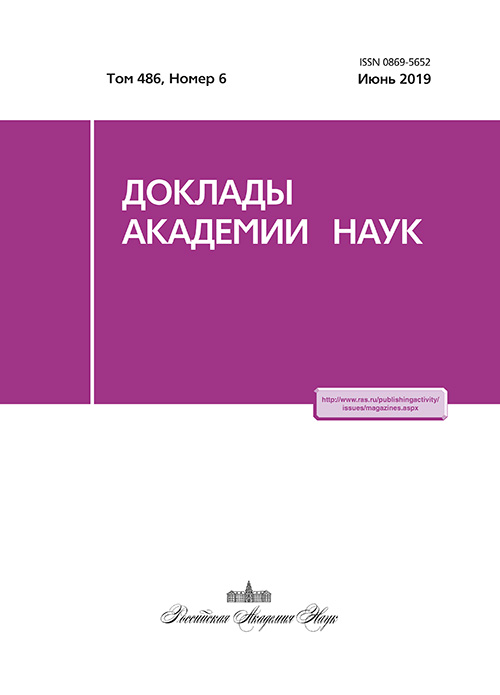Influence of atmospheric fronts on free and forced oscillations of the level in the Sea of Azov
- Authors: Ivanov V.A.1, Shul’ga T.Y.1
-
Affiliations:
- Federal State Budget Scientific Institution Marine Hydrophysical Institute of the Russian Academy of Sciences
- Issue: Vol 486, No 6 (2019)
- Pages: 737-741
- Section: Oceanology
- URL: https://journals.eco-vector.com/0869-5652/article/view/14525
- DOI: https://doi.org/10.31857/S0869-56524866737-741
- ID: 14525
Cite item
Abstract
The influence of inhomogeneous moving atmospheric pressure fields on currents and free and forced oscillations of the level of the Sea of Azov, induced by constant wind, is studied by the method of mathematical modeling. The hypothesis about the role played by a resonant mechanism in the occurrence of extremely high amplitudes of surge and seiche oscillations, generated by the baric field moving at a speed equal to that of a free long wave, is tested. It is found that, under the same wind, baric disturbances moving over the Sea of Azov induce forced oscillations, and after the disturbances stop, they induce free ones with amplitudes that are higher by 14% than those obtained at constant atmospheric pressure. It is shown that the baric front movement (speed and time of its movement are selected under the assumption that waves with maximum amplitudes are generated) plays an important role in the formation of the current structure and level oscillations in the Sea of Azov.
About the authors
V. A. Ivanov
Federal State Budget Scientific Institution Marine Hydrophysical Institute of the Russian Academy of Sciences
Email: shulgaty@mail.ru
Russian Federation, 2A, Kapitanskaya street, Sevastopol, 299011
T. Ya. Shul’ga
Federal State Budget Scientific Institution Marine Hydrophysical Institute of the Russian Academy of Sciences
Author for correspondence.
Email: shulgaty@mail.ru
Russian Federation, 2A, Kapitanskaya street, Sevastopol, 299011
References
- Монин А.С. Классификация нестационарных процессов в океане // Изв. АН СССР. 1972. № 7. С. 26-30.
- Герман В.Х. Исследование и расчет вероятностных характеристик экстремальных уровней моря // Тр. ГОИН. 1971. Вып. 107. 148 с.
- Матишов Г.Г., Инжебейкин Ю.И. Численные -исследования сейшеобразных колебаний уровня Азовского моря // Океанология. 2009. Т. 49. № 4. C. 485-493.
- Weissea R., von Storch H., Niemeyer H.D., Knaack H. Changing North Sea Storm Surge Climate: An Increasing Hazard? // Ocean & Coastal Management. 2012. № 68. P. 58-66.
- Лабзовский Н.А. Непериодические колебания уровня моря. СПб.: Гидрометеоиздат, 1971. 238 с.
- Быков Ф.Л., Гордин В.А. Трехмерный объективный анализ структуры атмосферных фронтов // Изв. АН. Физика атмосферы и океана. 2012. Т. 48. № 2. С. 172-188.
- Нестеров Е.С. Режим, диагноз и прогноз ветрового волнения в морях и океанах. М.: Росгидромет, 2013. 337 с.
- Demyshev S.G., Cherkesov L.V., Shul’ga T.Y. Analysis of Effects of Constant Wind on the Velocity of Currents and Seiche Oscillations in the Azov Sea Level // Russ. Meteorol. and Hydrol. 2017. V. 42. Iss. 6. P. 388-393.
- Blumberg A.F., Mellor G.L. A Description of Three Dimensional Coastal Ocean Circulation Model // Three-Dimensional Coastal Ocean Models. / Washington, D. C.: American Geophys. Union, 1987. V. 4. P. 1-16.
- Гидрометеорологические условия шельфовой зоны морей СССР. Том III. Азовское море. Л.: Гидрометеоиздат, 1986. 218 с.
- Гидрометеорологический справочник Азовского моря. Л.: Гидрометеоиздат, 1962. 247 с.
- Матишов Г.Г., Матишов Д.Г., Бердников С.В., Сорокина В.В., Левитус С., Смоляр И.В. Внутривековые флуктуации климата Азовского моря (по термохалинным данным за 120 лет) // ДАН. 2008. Т. 422. № 1. С. 106-109.
- Черкесов Л.В., Шульга Т.Я. Волны, течения, сгонно-нагонные процессы и трансформация загрязнений в Азовском море. Севастополь: ФГБУН МГИ РАН, 2017. 228 с.
- Мастерских М.А. Методическое пособие по составлению прогноза фронтальной боры. Л.: Гид-рометеоиздат, 1980. 35 с.
Supplementary files







